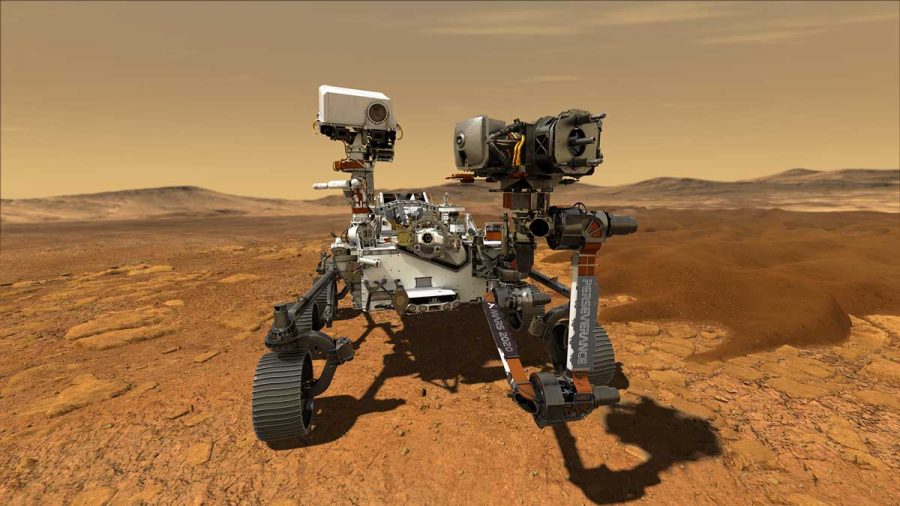NASA’s Perseverance Rover Lands on Mars
February 25, 2021
After its nearly 7-month journey from Earth to Mars, NASA’s Perseverance rover successfully landed on the Red Planet on Thursday, February 18th. Perseverance—or “Percy,” as nicknamed by mission control—executed a flawless landing in the planet’s Jezero Crater, an ancient lakebed to begin collecting samples to bring back to Earth and searching for evidence of ancient microscopic Martian life.
Perseverance’s most intense phase required it to perform difficult maneuvers that almost half of the spacecraft sent to Mars have failed, according to Matt Wallace, the mission’s deputy project manager. Known as its “seven minutes of terror,” Perseverance and every other spacecraft attempting to land on Mars must enter the Martian atmosphere, descend, and land without any human assistance because of the 11-minute delay in transmissions between the two planets. Once touchdown was confirmed at 3:55 p.m. EST, cheers erupted in the control room in relief of the passing of the anxious moment.
The first two images were sent to Earth just minutes after Perseverance’s touchdown, taken by its Hazard Avoidance Cameras as black-and-white, low-resolution thumbnails. However, its following footage was much more impressive, including colored images and even videos with audio that capture pictures of the planet’s rocky terrain along with a Martian breeze in the background of the video clips.
While on Mars, Perseverance will also study the planet’s geology and test how astronauts can produce oxygen from carbon dioxide in the atmosphere for future missions. As NASA’s fifth and most ambitious mission to the surface of the Red Planet, Perseverance plans to investigate an ancient river delta in Jezero Crater where water once flowed almost four billion years ago and observe nearby rocks to determine if they are volcanic basalt or sedimentary. The rover is intended to roam the surface of Mars for one Martian year, or 687 Earth days. It will cover about 650 feet per Martian day—more than any other robotic spacecraft sent to Mars before.
A few months after its landing, Perseverance will deploy Ingenuity, the helicopter that is currently attached underneath the rover. Ingenuity’s mission is to perform test flights over a 30-day period. If successful, Ingenuity will conduct the first-ever powered, controlled flight on another planet. With Perseverance’s multiple cameras, it will be able to record the historic flight, while Ingenuity itself will provide an aerial view of the moment using its two cameras. The Perseverance mission will pave the way for future human exploration of the Red Planet with scouts similar to Ingenuity used to gather information and assist future rovers.


